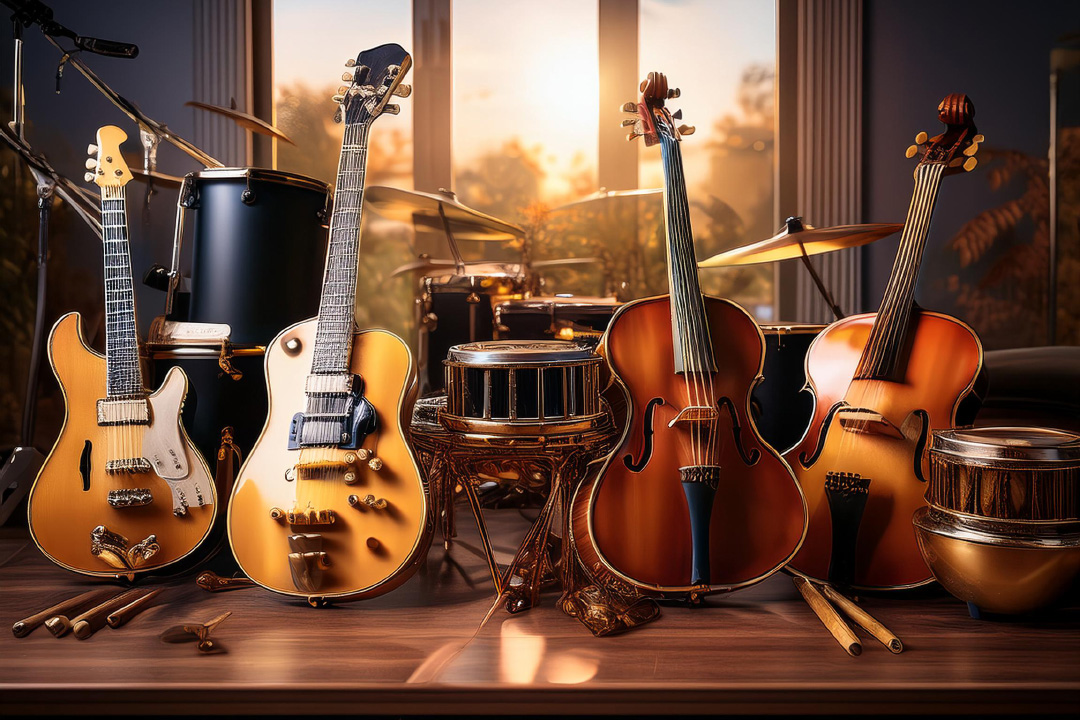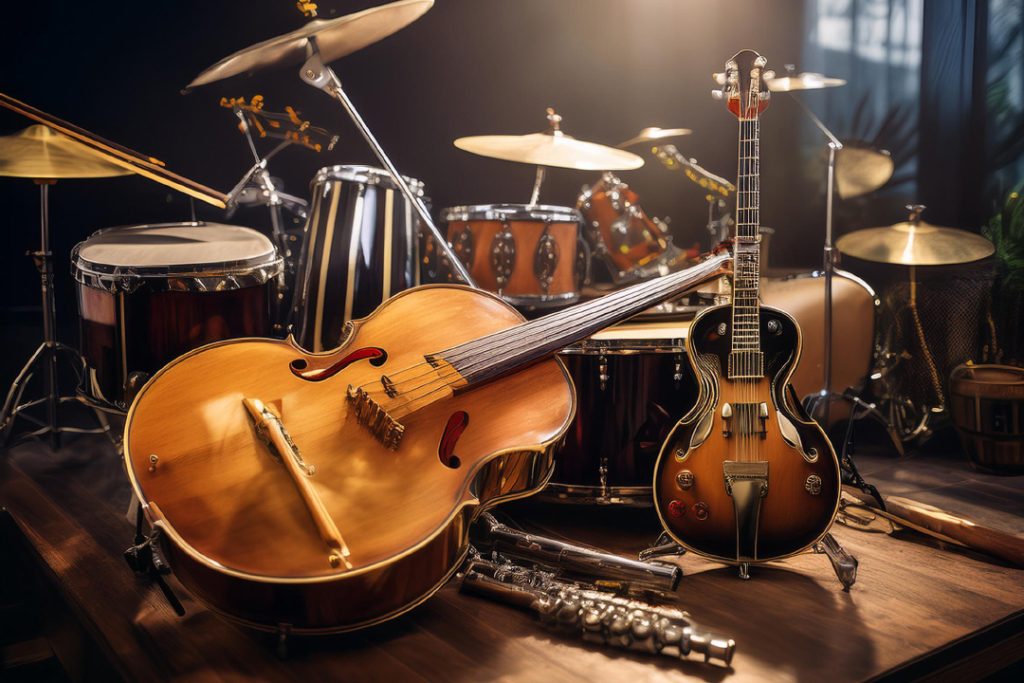The Groove of Blues Music
Dive into the History of the Blues
Ready for a musical adventure? Let’s groove through the history of blues music! Born in the early 20th century, the blues sprang from African American communities in the Southern U.S. Picture this: African musical traditions, spirituals, work songs, and folk music blended together to create something fresh and raw.
The early blues artists poured their hearts out in their songs, reflecting life’s highs and lows. This soulful genre quickly hooked audiences and became the foundation for many future music styles.
Check out these key moments in blues history:
| Period | Event |
|---|---|
| Early 1900s | Birth of Delta Blues |
| 1920s | First commercial blues recordings |
| 1940s | Urban migration sparking Chicago Blues |
| 1960s | Blues revival fueling rock music |
| 1980s – Today | Modern blues fusion |
Want to dive deeper? Read our detailed article on blues music history.
Blues Rocks: The Influence on Rock Music
Blues didn’t stay in one corner—it rolled into rock like a freight train. In the 1950s and 1960s, rock musicians soaked up blues like sponges, adding its flavor to their sound. This mashup gave us rock and roll.
Think about it: those catchy rhythms, heart-wrenching vocals, and groundbreaking guitar riffs from blues set the stage for rock. Guitarists started cranking up the volume and using electric sounds, spinning out subgenres like blues rock.
Here’s how blues jazzed up rock music:
| Element | Blues Touch |
|---|---|
| Guitar Techniques | Blues scales and awesome slide guitar |
| Song Structure | The classic twelve-bar blues |
| Lyrics | Pure emotional expression |
Curious about how rock sprouted from blues? Swing by our articles on rock music origins and rock and roll history.
Blues didn’t just fuel rock; it infused plenty of other music styles. It’s the heartbeat of our musical heritage.
Discovering Blues Music
When you think of blues, it’s hard not to feel that rich, soulful vibe that pulls you in. With all its different flavors, blues offers something for everyone. Let’s check out three iconic styles: Delta Blues, Chicago Blues, and Texas Blues.
Delta Blues
Delta Blues is where it all began, right in the heart of the Mississippi Delta. It’s raw, emotional, and straight from the soul. Delta Blues often leans on the guitar, harmonica, and those gritty, heartfelt vocals. Its haunting tunes and deep lyrics paint a vivid picture of life down South.
Famous Delta Blues Artists
| Artist Name | Top Tracks |
|---|---|
| Robert Johnson | “Cross Road Blues,” “Sweet Home Chicago” |
| Son House | “Death Letter,” “Grinnin’ in Your Face” |
| Charley Patton | “Pony Blues,” “A Spoonful Blues” |
Want more on Delta Blues? Dive into our blues music history article.
Chicago Blues
When African Americans headed north during the Great Migration, they brought their blues with them, giving birth to Chicago Blues. Picture blues with an electric twist—guitars turned up, bass, drums, and plenty of harmonica. It’s livelier and got that bounce that gets your foot tapping.
Famous Chicago Blues Artists
| Artist Name | Top Tracks |
|---|---|
| Muddy Waters | “Hoochie Coochie Man,” “Mannish Boy” |
| Howlin’ Wolf | “Smokestack Lightning,” “Spoonful” |
| Buddy Guy | “Damn Right, I’ve Got the Blues,” “Feels Like Rain” |
Check out how Chicago Blues gave a boost to rock music in our rock music origins article.
Texas Blues
Texas Blues is like a cool mix that stands out. Think guitars with a swing style, blending blues with country, jazz, and a laid-back feel. This genre’s got those smooth guitar solos and a groove that’s hard to resist.
Famous Texas Blues Artists
| Artist Name | Top Tracks |
|---|---|
| T-Bone Walker | “Call It Stormy Monday,” “T-Bone Shuffle” |
| Stevie Ray Vaughan | “Pride and Joy,” “Texas Flood” |
| Lightnin’ Hopkins | “Mojo Hand,” “Cotton” |
Get a closer look at Texas Blues’ journey in our rock and roll history article.
By soaking in these awesome genres, you’ll get why blues is such a big deal in music history. So come along, and let’s groove deeper into the fantastic world of blues!
More Blues Subgenres
Blues music isn’t just one flavor; it’s a whole menu of rich, diverse styles. Let’s dig into three of the most invigorating subgenres: Jump Blues, Electric Blues, and Soul Blues.
Jump Blues
Jump Blues burst onto the scene in the 1940s. Think of it as the jazz-rock love child—full of energy and rhythm that just makes you want to dance. It’s got a brass section that’ll blow your socks off and a beat that swings hard. Jump Blues served as a crucial stepping stone to rock and roll. Want to know how it all ties together? Check out our deep dive into rock and roll history.
| Feature | Description |
|---|---|
| Rhythm | Swinging, upbeat |
| Instruments | Brass, piano, saxophone |
| Era | 1940s |
| Influence | Jazz, rhythm and blues |
Electric Blues
Electric Blues cranked the dial up in the 1940s and 1950s with the introduction of electric guitars and bass. These amplified instruments pushed Blues into a new, electrifying era. The Chicago Blues scene was a hotspot for this raw and powerful sound. Electric Blues didn’t just change Blues—it was the spark plug for many rock genres. Curious about the nitty-gritty? Our blues music history has you covered.
| Feature | Description |
|---|---|
| Rhythm | Steady beat, often 12-bar blues |
| Instruments | Electric guitar, bass, harmonica |
| Era | 1940s – 1950s |
| Influence | Rock and roll, hard rock |
Soul Blues
Soul Blues hooked hearts in the 1960s by blending the emotional depth of blues with the groove and vocal intensity of soul music. This genre is all about storytelling—those deep, emotional tales backed by vibrant horn sections and rich vocals. Soul Blues didn’t just make waves; it left a lasting imprint that you can still feel in contemporary music. For a fuller picture, take a peek at our blues music history.
| Feature | Description |
|---|---|
| Rhythm | Smooth, groove-oriented |
| Instruments | Horns, organ, guitar |
| Era | 1960s |
| Influence | Soul, R&B |
Blues subgenres are more than just different styles; they’re different experiences that have shaped the music we love today. So, put on your headphones and dive into the colorful blues tunes that make up this vibrant tapestry. For a broader timeline of how blues intertwined with rock history, visit our rock and roll timeline.
Blues Fusion
Blues music keeps evolving, blending with other sounds to create fresh, groovy styles. Let’s check out three cool blues fusion genres: Blues Rock, Jazz Blues, and Gospel Blues.
Blues Rock
Blues Rock hit the scene in the mid-1960s, mixing the raw power of rock with classic blues vibes. Think electric guitar riffs, intense vocals, and energetic rhythms. Icons like Jimi Hendrix and Eric Clapton mashed up soulful blues with the wild spirit of rock, making a legendary sound.
Blues Rock is all about that strong backbeat, wild guitar solos, and heartfelt singing. It was a game-changer for rock music origins, inspiring countless bands and artists over the years.
Jazz Blues
Jazz Blues brings together the improv magic of jazz with the soulful heart of blues. This mix has complex chords, fancy melodies, and spontaneous solos. Legends like Ray Charles and B.B. King mastered this blend, leaving a lasting imprint.
In Jazz Blues, you’ll catch funky syncopation and swing rhythms native to jazz, paired with the emotional punch of blues. This style has shaped both jazz and blues in big ways.
Gospel Blues
Gospel Blues mixes the deep feeling of gospel tunes with the emotive punch of blues. Starting in African American churches, this genre highlights themes like hope, redemption, and faith. The intense gospel vocals combined with bluesy melancholy make an uplifting sound.
Artists like Sister Rosetta Tharpe brought Gospel Blues into the mainstream. The call-and-response style from gospel fits perfectly with the blues’ soulful depth.
| Genre | Key Elements | Notable Artists |
|---|---|---|
| Blues Rock | Electric guitar riffs, powerful vocals, dynamic rhythms | Jimi Hendrix, Eric Clapton |
| Jazz Blues | Complex chords, intricate melodies, improvisational solos | Ray Charles, B.B. King |
| Gospel Blues | Spiritual themes, passionate vocals, call-and-response | Sister Rosetta Tharpe |
Getting to know these fusion genres adds layers to our love for blues music genres. Each fusion style shows how blues keeps its cool while influencing modern music. For more on how blues rocked the social and cultural world, check out its history and impact.
Impact of Blues Music
Social and Cultural Influence
Blues music, born in the African American communities of the Deep South, has left an undeniable mark on society and culture. It’s more than just a genre; it’s the lifeblood of countless stories and emotions. With its poignant lyrics and soulful tunes, blues music has amplified voices on issues like racism, poverty, and love, cutting across time and ages.
During the civil rights movement, blues was the background music of resilience and defiance. The genre became a magnet, pulling people together and creating a shared sense of experience. By touching on raw human emotions, blues music crossed cultural lines, influencing various music genres and attracting fans worldwide.
Evolution of Music Genres
The blues isn’t just another style; it’s the cornerstone of many other musical genres.
Rock and roll in the ’50s wouldn’t be what it is without the blues. Early rock legends often borrowed from blues music, adopting its chords, beats, and themes. You can hear the blues’ DNA in the energy and passion of those early rock songs.
| Genre | Influenced by Blues (%) |
|---|---|
| Rock and Roll | 80% |
| Jazz | 60% |
| R&B | 70% |
| Country | 50% |
Jazz, too, owes a lot to the blues. Jazz musicians built on the improvisational and emotional aspects of blues, creating a rich mix that has charmed audiences for years.
Then there’s R&B and soul, both of which have their roots firmly in the blues. These genres continue the blues’ tradition of storytelling but add modern twists to the sound.
Early country music was also shaped by the blues. Mixing blues rhythms and melodies with folk gave birth to a new genre that still resonates today.
The evolution of blues shows how one genre can stretch and shape the entire musical landscape. For more about its impact, dive into our articles on rock and roll history and the rock and roll timeline.
Blues music has undeniably shaped the soundtracks of our lives. Let’s keep honoring and exploring this rich tradition.
Here some recommended links selected for you: The Best Books of the Month, Todays best Deals at Amazon, Best Sellers in Cell Phones & Accessories and last but not least the easy and great way to send a gift for the holidays: Amazon.com eGift Card (Instant Email or Text Delivery).



